
The Truth About Roadside Zoos
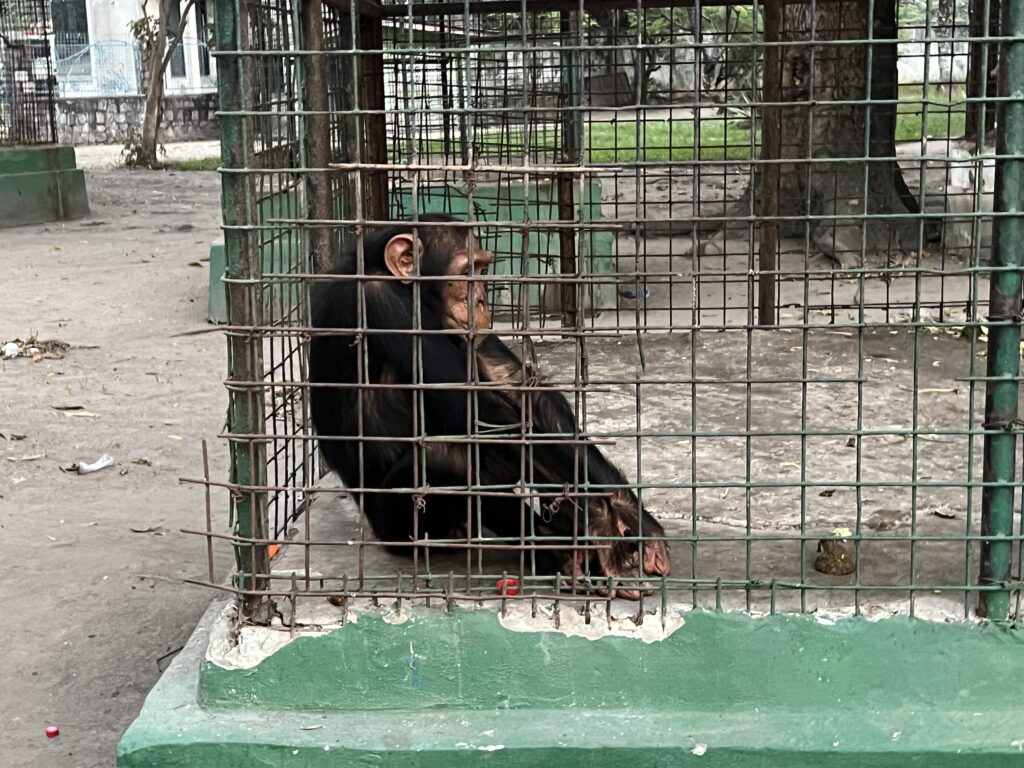

VANI JAISHANKAR
Zoo officials will tell you zoos exist to educate, partake in conservation efforts, and provide a safe and friendly place where animals can thrive. Most zoos enforce specific rules and regulations to ensure the animals are treated well and provided with the necessities. Many are home to several endangered species facing possible extinction. Their goal is to educate the public about these species in hopes of creating a better future for them. While zoos can be a place for people to go spend their afternoons, safety and respect for the wild should always be priorities. That is not the case at roadside zoos. These attractions call themselves zoos to encourage visitors, but behind the scenes, they are dangerous places.
How a Zoo Becomes and Stays Accredited by the AZA
A zoo must take several steps to become an accredited facility by the Association of Zoos and Aquariums (AZA).
- The AZA selects an accreditation commission to visit zoos and aquariums seeking accreditation. The committee is responsible for evaluating applications, conducting interviews, identifying concerns, and forming an accreditation decision. After accreditation, the committee is in charge of monitoring accredited zoos, writing and enforcing professional standards, and helping guide, train, and mentor.
- When evaluating zoos and aquariums, the accreditation commission is looking to make sure a facility follows the AZA standards for animal welfare, care, and management. This includes living condition, environment, housing, maintaining social groups when required, and ensuring all animals receive the top-most care both medically and nutritionally. On top of that, the committee evaluates the zoos’ animal conservation and educational programs, safety policies and procedures, guest services, security, quality of staff, physical facilities such as restrooms and restaurants, finances, and officials in charge of each facility.
- Each applying facility is required to fill out a detailed questionary. This consists of copies of policies and procedures, records, lists, and prior reports. According to the AZA, this process can take several months to complete and approximately six months to evaluate. A team of inspectors, which consists of at least one licensed veterinarian and an animal and operations expert, visit the facility in person for several days. They interview staff, gathering information to create reports, check records, and assess the welfare of all the animals and environments in the zoo. Once the inspection is complete, the team will create a report and submit it to the accreditation commission for further review.
Each month the accreditation commission will meet to discuss any issues regarding incident and progress reports as well as deal with any business-related work that needs to be completed. Twice a year the commission meets to discuss the inspection reports, documents submitted by zoos, and information stated by other organizations and outside individuals. Senior officials from the zoo are required to be present to answer any further questions.
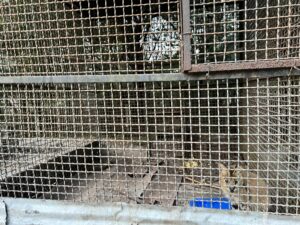
At the end of the meeting, the accreditation commission will make its final decision on whether to list the zoo as an accredited facility. And each year a welfare assessment and inspection is conducted and for a zoo to stay accredited it must repeat the accreditation process every five years.
What is the Animal Welfare Act (AWA)?
The (AWA) is the only federal law that protects zoo animals. The law states “Animals, in the custody of a dealer or exhibitor are protected by regulations governing their care, handling, and transport.” Zoo management will tell you that animal welfare is their top priority. Zoos will be thoroughly evaluated by the accreditation commission for a zoo to gain accreditation and stay accredited.
What are Roadside Zoos?
The Animal League Defense Fund defines a roadside zoo as a “small, unaccredited zoo where wild and exotic animals suffer in captivity.” Even though it is a smaller type of zoo, it houses not only small species but large ones as well. The purpose of roadside zoos is to attract people passing by who are interested and in awe of wild animals. Often, people are lured in by the different interactions they allow including feeding and playing with the wild animals. Unfortunately, many people do not understand how these zoos are mistreating and putting animals at risk. Visitors may be thrilled they can feed or pet a tiger cub, but at the same time, they fail to see the potential risks associated with interacting with a wild animal.

Living Conditions in Roadside Zoos
Animals kept in roadside zoos suffer day in and day out. Although roadside zoos are smaller than accredited zoos, they house both small and large animals. They do not often consider whether they have adequate space for the species they keep. Lions, tigers, monkeys, and wolves are all popular species found in roadside zoos. Many enclosures where animals live are too small, which restricts their natural movements. The ability to walk around, climb, or fly becomes impossible.
In the wild, many species are used to and can adapt to different temperatures. But roadside zoos often fail to provide access to the shade and shelter that many animals require. This is especially important for the animal’s health in the summer and winter months when temperatures can reach extreme highs and lows.
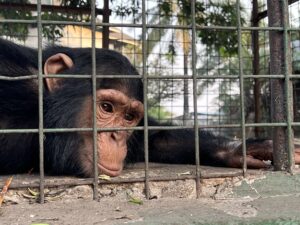
Roadside zoos also fail to provide enrichment opportunities. Enrichment promotes brain stimulation, which aids in the overall well-being of the animals. It is important for animals, especially those in captivity, to be able to participate in natural behaviors, such as digging and foraging. But animals in roadside zoos are often left without the space or resources for this. Without mental stimulation, wildlife can become bored, agitated, or despondent.
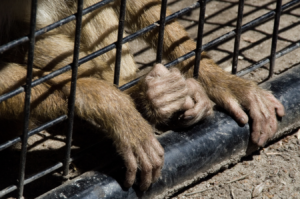
In addition to not meeting animals’ physical and mental needs, roadside zoos also neglect their residents’ social well-being. Monkeys and lions are often placed in enclosures alone. This causes emotional and mental distress because they are naturally social creatures.
Perhaps the most important problem with roadside zoos is that they disregard safety. Even though zoo owners and visitors directly interact with wild animals, few precautions exist to limit the dangers that come with proximity to wildlife. Maintaining cleanliness is at the bottommost of priorities. Because roadside zoo animals live in such small enclosures, often crammed close to each other, the disease is common and can spread easily. This poses a risk to both animals and humans. Due to some of the animals’ immense strength and power, paired with inadequate fencing, the possibility of escape is high. This puts the zoo, its residents, visitors, and the surrounding community in danger.
The Famous Tiger King
A popular Netflix show called “Tiger King” delves into the life of Joe Exotic, owner of a wildlife park named GW Exotics. Although his facility wasn’t classified as a roadside zoo, the conditions and the treatment he subjected the animals to were very similar to the treatment roadside zoo animals experience. He owned mostly big cats such as tigers and lions, but also owned bears and other species. The zoo’s staff were untrained and unprofessional. They lacked the knowledge to handle or be around big cats and other wild animals. GW Exotics’ animals lived in harsh conditions and were continually subjected to cruel treatment. The zoo was well known for photo ops with tiger cubs separated from their mom at a very young age. Even when they cried out for their mother, Joe Exotic allowed visitors to handle the cubs. Unfortunately, his cruelty went far beyond photo sessions. After he no longer considered animals useful, he proceeded to kill them. There are, unfortunately, many other roadside zoos with similar stories, some of which are included in the Netflix show.
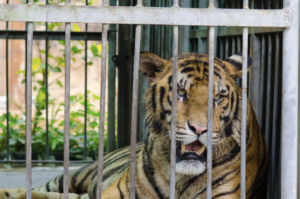
Ultimately, Joe Exotic was charged, his zoo shut down, and he is currently serving a prison sentence of 22 years for the cruelty and mistreatment of the animals in his care. The Wild Animal Sanctuary stepped in and rescued 150 animals from GW Exotics.
The Big Cat Public Safety Act
“Tiger King” brought the issues with Joe Exotic and big cat ownership to the surface and reinforced the necessity of the Big Cat Public Safety Act (BCPSA). This act, which was passed in December 2022, prohibits the private ownership of big cats, such as lions and tigers, in the US. Accredited facilities are an exception. For safety reasons, the BCPSA also limits public interaction with big cats, which will discourage photo ops, petting, and cub handling. People who currently privately own big cats are allowed to keep them in their possession but are required to register them with the government. That way, first responders and animal control officials are aware there are potentially dangerous animals in the community.
Ways You Can Help
- Educate yourself on roadside zoos near your area.
- Report any animal welfare problems you witness in your area, including active roadside zoos.
- Spread the word about the dangers of roadside zoos.
- Donate to animal rights organizations Consider SAFE Worldwide, PETA, The Animal Defense League Fund (ALDF), The American Society for the Prevention of Cruelty to Animals (ASPCA), Animal Aid, and BornFree USA
- Visit and support ethical sanctuaries that always prioritize animal welfare and conservation above human entertainment.
Watch our video:
https://www.youtube.com/watch?v=aOpwqiUAg4U
References
8 ways how you can stop animal cruelty in zoos. (n.d.). Impactful Ninja. https://impactful.ninja/stop-animal-cruelty-in-zoos/
Accreditation basics | Association of zoos & aquariums. (n.d.). Association of Zoos & Aquariums | AZA.org. https://www.aza.org/becoming-accredited?locale=en
Block, K., & Amundson, S. (2023, April 6). Netflix’s ‘Tiger King’ is a wake-up call for endthe ing private possession of big cats. A Humane World. https://blog.humanesociety.org/2020/03/netflixs-tiger-king-is-a-wake-up-call-for-ending-private-ownership-of-big-cats.html
Ethical sanctuaries. (2023, April 24). SAFE Worldwide. https://safeworldwide.org/ethical-sanctuariA new
Laws affecting zoos. (n.d.). Animal Legal & Historical Center. https://www.animallaw.info/intro/laws-affecting-zoos
New report highlights the inhumane conditions of roadside zoos. (2022, June 10). World Animal Protection. https://www.worldanimalprotection.ca/news/new-report-highlights-inhumane-conditions-roadside-zoos
Roadside zoos. (2019, September 9). Animal Legal Defense Fund. https://aldf.org/issue/roadside-zoos/
Roadside zoos. (n.d.). Tigers in America ®. https://tigersinamerica.org/roadside/
Disclaimer: The opinions, beliefs and viewpoints expressed by the various authors and forum participants on this web site are their own and do not necessarily reflect the opinions, beliefs and viewpoints of SAFE Worldwide.





